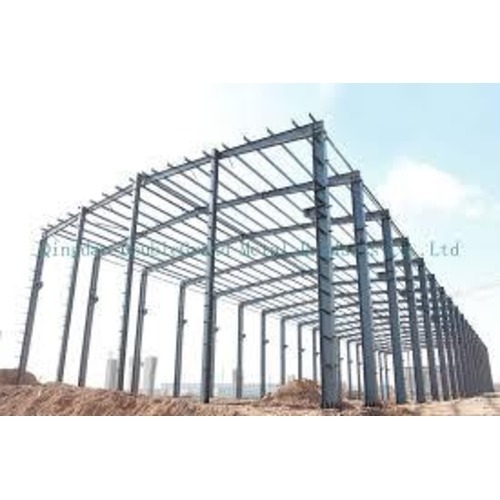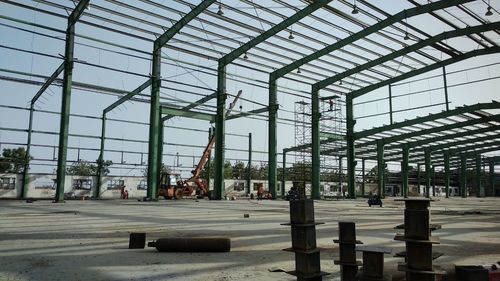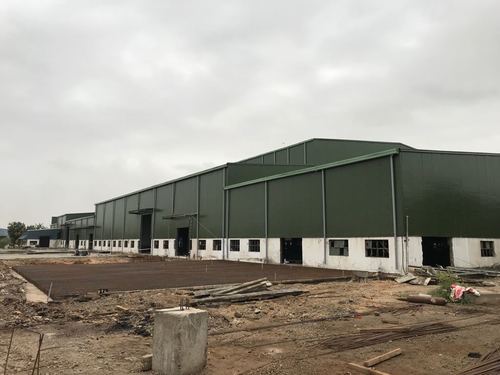- Home Page
- Company Profile
-
Our Products
- Roofing Sheet
- Upvc Roofing Sheet
- Frp Roofing Sheet
- Jsw Galvanized Roofing Sheets
- Galvalume Roofing Sheets
- Colored Roofing Sheet
- Corrugated Steel Sheet
- JSW Profile Roofing Sheets
- Pre-coated Aluminium Roofing Sheets
- Aluminium Roofing Sheets
- Curved Roofing Sheet
- MS Roofing Sheet
- Curved Tile Profile Sheet
- UPVC Roof Sheet
- Tile Profile Sheet
- Color Coated Aluminium Roofing Sheets
- Pre Painted Galvanized Roofing Sheets
- Colored Polycarbonate Sheets
- Trapezoidal Roofing Sheet
- Transparent Polycarbonate Sheet
- FRP Roofing Polycarbonate Sheet
- Bare Aluminium Roofing Sheets
- Polycarbonate Sheets
- Aluminium Roofing Sheet
- Crimping Roofing Sheet
- Hi Rib Profile Sheets
- Curved Sheet
- Fibre Roofing Sheets
- Tile Sheet
- Steel Roofing Sheet
- Pre Coated Aluminium Roofing Sheets
- PVC White Transparent Roofing Sheets
- Galvanised Roofing Sheets
- Pre Coated Roofing Sheets
- Tile Profile Roofing Sheet
- Essar Galvanized Roofing Sheets
- Polycarbonate Roofing Sheets
- Side Cladding Sheets
- Trapezoidal Roofing Sheets
- Crimp Curved Roofing Sheet
- GI Profile Sheet
- Stainless Steel Roofing Sheets
- Pre Painted Roofing Sheets
- Color Coated Roofing Profile Sheets
- Bare Galvalume Roofing Sheets
- Corrugated Roofing Sheets
- Color Coated Galvalume Roofing Sheets
- Metal Roofing Sheets
- Color Coated Galvanized Roofing Sheets
- Colour Coated Tile Profile Sheet
- GI Roofing Sheet
- Pre Painted Galvalume Roofing Sheets
- Insulated Roofing Panels
- Roofing Sheet Replacement
- Decking Sheet
- Pre Engineered Buildings
- Roofing System
- Air Ventilator
- Color Coated Coils
- Grating
- Roofing Screws
- Sandwich Roof Panel
- Purlins
- Polycarbonate Sheet
- Trussless Roof
- Colour Coated Sheets
- Conventional Industrial Shed
- Metal Sheet
- Prefabricated Structure
- Roofing Sheet
- Contact Us

Industrial PEB Structure
300 INR/Square Foot
Product Details:
- Open Style Rolling
- Material Steel
- Roof Material Steel
- Door Four
- Color Grey
- Use Workshop Warehouse
- Click to view more
X
Industrial PEB Structure Price And Quantity
- 300 INR/Square Foot
- 1000 Square Foot
Industrial PEB Structure Product Specifications
- Grey
- Four
- Steel
- Rolling
- Steel
- Workshop Warehouse
Industrial PEB Structure Trade Information
- Cash in Advance (CID) Cheque Cash Advance (CA)
- 5000 Square Foot Per Month
- 1 Week
- All India
Product Description
Stainless steel made Industrial PEB Structure is used for warehouse and workshop purpose. It features rolling type opening style that promotes smooth opening and closing of its four doors. This structure can be assembled quickly and at low installation cost. This industrial building possesses excellent thermal and acoustic properties and it is highly durable. Moreover, it can resist heavy blow of wind, harsh weather and fire. This Industrial PEB Structure remains unaffected during earthquake. All its accessories like column, purlin, roller shutter door, downpipe and side bracing have been procured from reliable sources to ensure about its structural stability for prolonged period.
Product details
|
Material |
Structural Steel |
|
Dimension |
As per Requirement |
|
Coating |
As per Requirement |
|
Thickness |
As per Requirement |
|
Usage/Application |
Industrial |
|
Industry/Application |
PEB Structure, Industrial Shed, Conventional Shade |
|
Service Location/City |
Pan India |
Features of Industrial PEB Structure:
1. This structure is insulated with Rockwool or EPS or glass wool for improved thermal performance and unique sound insulation level.
2. Made of corrosion proof stainless steel
3. Ability to endure adverse climactic conditions
4. Capacity to withstand seismic effect and fire
Applications of Industrial PEB Structure:
1. Manufacturing Facilities: PEB structures are extensively used for manufacturing plants and factories. They provide large clear spans, allowing for efficient layout of machinery and equipment. Industries such as automotive, electronics, food processing, and textiles often utilize PEB structures for their production facilities.
2. Warehouses and Distribution Centers: PEB structures are ideal for warehouses and distribution centers due to their ability to provide large column-free spaces, maximizing storage capacity and facilitating easy movement of goods. These structures are commonly used in logistics, retail, and e-commerce sectors.
3. Workshops and Maintenance Facilities: PEB structures are suitable for workshops and maintenance facilities where heavy machinery and equipment are operated and maintained. The clear span design allows for unobstructed movement of machinery and efficient utilization of space.
4. Cold Storage and Refrigerated Warehouses: PEB structures can be designed to incorporate insulation and temperature control systems, making them suitable for cold storage and refrigerated warehouses. Industries such as food and beverage, pharmaceuticals, and agriculture benefit from these specialized PEB structures.
5. Agricultural Buildings: PEB structures are used in agriculture for various purposes including storage of crops, livestock housing, and equipment storage. They offer cost-effective solutions for farmers and agricultural businesses looking to expand their operations.
6. Aircraft Hangars: PEB structures are well-suited for aircraft hangars due to their large clear spans and quick construction time. These structures provide shelter for aircraft and equipment while offering flexibility for future expansions or modifications.
7. Sports Facilities and Arenas: PEB structures are increasingly being used for sports facilities and arenas due to their ability to provide large column-free spaces, allowing for optimal seating arrangements and unobstructed views for spectators.
8. Commercial Buildings: PEB structures can be adapted for various commercial purposes such as retail outlets, office buildings, and recreational centers. Their versatility in design and cost-effectiveness make them attractive options for developers and businesses.
9. Educational Institutions: PEB structures can be used to construct educational facilities such as schools, colleges, and training centers. They offer flexible layouts for classrooms, laboratories, and administrative offices, accommodating the diverse needs of educational institutions.
10. Healthcare Facilities: PEB structures can be utilized for healthcare facilities including hospitals, clinics, and medical laboratories. Their quick construction time and customization options enable healthcare providers to rapidly expand their facilities to meet growing demand.
Industrial PEB Structure FAQ:
Q. What is a PEB (Pre-Engineered Building) Structure?
Ans: A PEB structure is a building system that is engineered and fabricated in a factory and then assembled on-site. It consists of pre-designed and pre-fabricated components that are manufactured to fit together precisely.
Q. What are the Advantages of PEB Structures for Industrial Applications?
Ans: PEB structures offer several advantages, including cost-effectiveness, rapid construction, design flexibility, durability, and sustainability. They also provide large clear spans, allowing for efficient use of space in industrial settings.
Q. What Types of Industries Can Benefit from PEB Structures?
Ans: PEB structures are suitable for a wide range of industries, including manufacturing, warehousing, logistics, automotive, aerospace, agriculture, retail, healthcare, and education, among others.
Q. How Long Does It Take to Construct a PEB Structure?
Ans: The construction time for a PEB structure depends on various factors such as the size and complexity of the building, site conditions, and the availability of labor and equipment. However, PEB structures typically have shorter construction times compared to traditional buildings.
Q. Are PEB Structures Customizable to Meet Specific Requirements?
Ans: Yes, PEB structures are highly customizable to meet the specific needs and requirements of different industries and applications. They can be designed to accommodate various layouts, equipment, insulation requirements, and architectural finishes.
Q. What is the Life Expectancy of PEB Structures?
Ans: The life expectancy of a PEB structure depends on factors such as design, materials used, maintenance practices, and environmental conditions. However, with proper design, construction, and maintenance, PEB structures can have a long service life.
Q. Are PEB Structures Environmentally Friendly?
Ans: PEB structures can be designed to be environmentally friendly by incorporating sustainable materials, energy-efficient systems, and green building practices. Additionally, the efficient use of materials and reduced construction waste contribute to their sustainability.
Q. Can PEB Structures Be Expanded or Modified in the Future?
Ans: Yes, one of the advantages of PEB structures is their flexibility for future expansions or modifications. Additional bays, mezzanine floors, or other structural changes can be easily incorporated into the existing building design.
Q. Are PEB Structures Cost-Effective Compared to Traditional Construction Methods?
Ans: Yes, PEB structures are generally more cost-effective than traditional construction methods due to factors such as reduced material waste, shorter construction time, lower labor costs, and factory-controlled quality.
Q. Are PEB Structures Suitable for Seismic or High-Wind Zones?
Ans: Yes, PEB structures can be engineered to meet specific design requirements for seismic zones, high-wind zones, and other environmental conditions. Advanced engineering techniques and structural systems can enhance their performance in such situations.
Tell us about your requirement

Price:
Quantity
Select Unit
- 50
- 100
- 200
- 250
- 500
- 1000+
Additional detail
Mobile number
Email
Other Products in 'Pre Engineered Buildings' category
"We are accepting bulk order quantity from Gujarat, Maharashtra, Rajasthan and Madhya Pradesh."







 Call Me Free
Call Me Free
